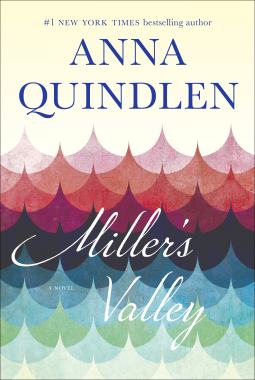
All it took was seeing Anna Quindlen’s name on the offer from Net Galley for me to click the “request” button for Miller’s Valley. Coincidentally, I read the Feb/March issue of AARP Magazine as I neared the end of the book. It published a short blurb where Anna describes her fascination with Charles Dickens’s David Copperfield. She admires his span of coverage from child to adult, his details that built a world, and his social consciousness – exactly what I had found in her book.
From the first line of the prologue, “It was a put-up job, and we all knew it by then,” the reader senses the inevitable as people from the government’s Valley Federal Recreation Area seeks views from the public before doing what they intended to do in the first place. There will be no surprise by the time late in the story when she says, “They’d gone from talking about taking people’s homes to giving people jobs, from eminent domain to tourism.”
Against that predictable backdrop, Mimi Miller’s story unwinds from the child eavesdropping on her parents through her adulthood. The theme of loss – one brother to a richer life and another to prison, a best friend to California, the cattle to pasture loss, her father to a stroke, and the land to the water – threads its way to a new normal.
Predictable government operations contrast with the vagaries of people rubbing their own goals against each other in unexpected twists and turns. The ending like a jigsaw puzzle, complete except for that one small missing piece, satisfies with Mimi’s philosophy, “Maybe everyone stays the same inside, even when their life looks nothing like what they had, or even imagined.”
If you, like me, are already an Anna Quindlen fan, Miller’s Valley will not disappoint. If you haven’t read her yet (the only reason I can imagine that you are not a fan), this book is a good place to start.